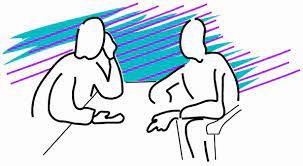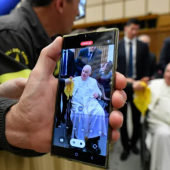All Behaviour is Communication

It is said that all behaviour is communication.
Ordinarily when we think of communication, we think of oral, written or digital communication. But we use many other methods like body language to communicate with others. We use gestures, eye contacts, smiles, handshake, signs and symbols in our everyday communication with one another. Whether we are conscious or not, our actions, our dress, and our conduct communicate something about us. They define what we are.
We also use extended instruments for communication. These instruments are called media. When media is used to reach vast audience, we call them mass media. Advancement in technology has made it possible for us to communicate with vast numbers of people across long distances within a short span of time. There are many forms of communication that unfold all around us. People and instruments clamour for our attention. They are ‘dying’ to communicate.
Communication is unavoidable, but good communication cannot be taken for granted. Misunderstanding a message can have serious consequences. Sometimes it may make the moment humorous, but it can also lead to serious problems. It can even be tragic as in the following ‘Circus Story’ told by Philosopher Soren Kierkegaard.
Once upon a time, according to the story, a circus group camped on the outskirts of a village during a dry, hot season when the fields were parched. One evening as everything was being readied for the performance, a fire broke out in the circus camp. The entire troupe pitched in to fight the fire, but it was too much for them. In desperation, the circus manager sent a clown to town to sound the alarm and get help.
Suddenly, the townspeople saw and heard the clown in his bizarre costume and garish make-up shouting that the circus tents are on fire and even the town is threatened. But no one was alarmed. They assumed he was clowning. Children laughed and played as they followed him around. Adults listened in amusement and smiled at the antics. They admired his funny costume, his long red nose, his cap with a long tail. No one took the clown seriously, and as a result the fire spread to the town and did much damage to the circus camp and parts of the town.
His intended message did not get through to the people. They saw the clown as someone not to be taken seriously. His communication failed because of the way his words were interpreted by his listeners. If he had changed his costume and removed his makeup, he would have succeeded in communicating the message effectively. His message was lost in the way he looked. His appearance spoke much louder than his words.
We show what we are by what we say, unconsciously, between the lines. We too communicate through what we say as well as through everything what we are and represent. The way we dress, speak, behave, move, gesticulate, all define the way we communicate. Theodore Newcombe says a man who allows junk to accumulate in front of his house communicates something to others by his behaviour.
Mahatma Gandhi communicated his protest against the British Empire for their colonial rule of India by rejecting the dress of an English gentleman and by adopting homespun Khadi as his dress. He communicated through his clothing, the way he dressed. His dress became a medium of communication. He used it to denounce the British, to demand independence for his country, to teach thrift, self-reliance, spirit of work, and to advocate simplicity of life.
Religious men and women wear costumes and habits of different colours, symbolizing sacrifice and renunciation. Their dress marks them out as different from the rest of the people. The uniform of the students, the costume of lawyers, doctors, nurses, police personnel, bus and taxi drivers, sales personnel in the shopping mall, help us to understand their identity. Costumes contribute much to portray one’s character.
The national flags of various countries have colours and symbols that contain specific meaning. These are symbolic and express the national ethos and important values of the countries.
In Christian prayers and worship, different colours express different meanings. The vestments worn during solemnities and feasts, colours used for Advent, Lent and Ordinary season of the year have symbolic meaning. Colours signify emotions of joy and sorrow, sacrifice and penance.
Social norms and manners tell us how to conduct according to the occasion, how to dress, speak, behave and act in each situation. All these conducts are related in some way to communication.
Communication and Credibility
Credibility is an important factor in making communication effective. The main problem with the clown’s communication was a credibility deficit. People did not take him seriously. We trust much of the media like the newspapers, radio, television and social media to give us news and information that is true. Ordinarily we do not suspect what we read, see or hear. Most of the time we also know how to distinguish facts and fiction in the various media that we use. People didn’t believe the words of the clown because they did not expect him to say anything serious.
However, even institutions that are supposed to be credible lose their credibility when they frequently fail to communicate truth. Worst still is when they try to serve falsehood under the guise of truth. That is the reason why state-owned media have lost much of their credibility. They do not always tell the truth in its entirety. Sometimes information is manipulated, facts are distorted or hidden, and lie is masqueraded as truth. In communication as in life, trust once lost is difficult to restore. Communist regimes and dictatorial governments try to seize media to control the masses. But a great deal of communication they provide to people contain falsehood and propaganda. But the public are intelligent to know the difference between truth and propaganda. They begin to trust such media less and less.
With the increase of speed in communication, truth has become a casualty. News and information are not always verified. Distortions in news continue to happen either by chance or by design. Competition among various media organizations, vested interests and lack of professionalism are at the root of such distortions. As the story of the clown tells us, our messages are sometimes not heeded because our behaviour, our manners, our costumes contradict what we say. Bias and prejudice also affect the way we receive or respond to the messages we receive.
The Pontifical Council for Social Communication in 2000 issued a document called Ethics in Communication. Speaking on credibility, it says: “For the church to speak credibly to people today, those who speak for her have to give credible, truthful answers”(no. 26). It urges that communication be always “truthful and sincere. Truth is essential to individual liberty and to build authentic community among persons” (no.20).
Communication has much to do not only with the words but also with style and tone. “The great enemy of clear language is insincerity” said George Orwell. “Where there is a gap between one’s real and one’s declared aims, one turns instinctively to long words and extensive idioms, like a cuttlefish squirting out ink.”
Communication must be geared to promote life, human dignity, values that can bring about positive changes in the world. Jean-Mare Chappuis of the University of Geneva used the gospel analogy of the sabbath to say: “Communication is for human beings and not human beings for communication.”
The basic, non-negotiable premise of human communication is that it is dialogical, two-way, respecting the receiver as much as the sender. The two must be able to reverse their roles. If technology does not enhance solidarity and create a global community, it can have many undesirable consequences. In the same way, ideological interest, desire for profit and political control should not be permitted to take the upper hand. The fundamental ethical principle in communication is that the human person and the community are the end and measure of social communication.
###
Radio Veritas Asia (RVA), a media platform of the Catholic Church, aims to share Christ. RVA started in 1969 as a continental Catholic radio station to serve Asian countries in their respective local language, thus earning the tag “the Voice of Asian Christianity.” Responding to the emerging context, RVA embraced media platforms to connect with the global Asian audience via its 21 language websites and various social media platforms.

















- Reply
Permalink